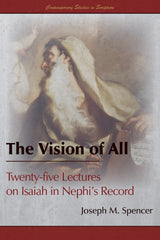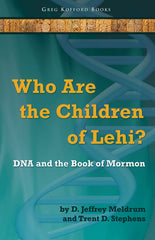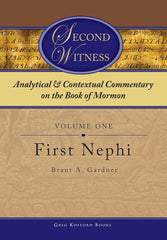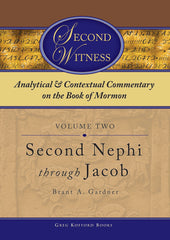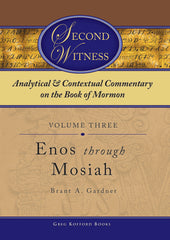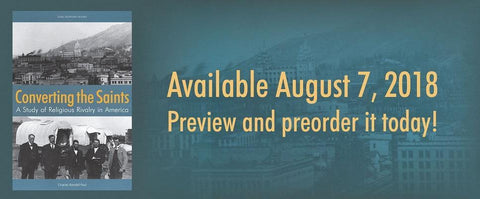News
Who is Lot Smith? Forgotten Folk Hero of the American West November 06 2018

WHO IS LOT SMITH?
LOT SMITH is a legendary folk hero of the American West whose adventurous life has been all but lost to the annals of time. Lot arrived in the West with the Mormon Batallion during the Mexican-American War. He remained in California during much the Gold Rush, and was later a participant in many significant Utah events, including the Utah-Mormon War, the Walker War, the rescue of the Willie & Martin Handcart Companies, and even joined the Union Army during the US Civil War. Significantly, Lot Smith was one of the early settlers of the Arizona territory and led the United Order efforts in the Little Colorado River settlements. What follows is a brief sketch of Lot's service in the Mormon Batallion and the experiences that shaped him.
Lot was reared by a hard-working Yankee father and a devoutly religious mother. His mother passed when he was fourteen. At the impressionable age of sixteen, Lot joined the Mormon Battalion in the Mexican-American War as one of its youngest members. His father passed before he returned to his family. Consequently, his experiences in the Mormon Battalion shaped his life significantly. The struggles of this heroic infantry march of two-thousand miles across the country embedded within him several valuable characteristics.

Lot Smith came to value the comfort of clothing and shoes in the absence thereof. As the battalion march continued, his clothing and shoes wore out. He had only a ragged shirt and an Indian blanket wrapped around his torso for pants. At the death of one of the soldiers, he gratefully inherited the man’s pants. His feet were shod with rawhide cut from the hocks of an ox. Ever after, he never took shoes for granted. It appears that he may have developed an obsession for them. Soon after his arrival in Utah Territory, he was known to have bought himself a pair of shoes that was outlandishly too large. He said that he wanted to get his money’s worth! Years later, he bought thirty pairs of shoes at a gentile shoe shop. When he saw the astonishment of the shopkeeper, he said, “If these give good service, I’ll be back and buy shoes for the rest of my family!” He frequently carried an extra pair of shoes. In at least two recorded instances, he gave an extra pair of shoes to grateful men who were in desperate need. He knew how feet with no shoes felt—sore, bruised and cut.

Smith developed endurance during the Mormon Battalion march. He carried a shoulder load of paraphernalia, walked as many as twenty-five miles or more each day—sometimes dragging mules through the heavy sand. There was no stopping—and absolutely no pampering. When the going got rough, he had to keep going. He suffered extreme heat and freezing nights on the deserts. Through all of these challenges, he learned to laugh at the hardships and to maintain a happy optimistic view of life. He emerged from the Mormon Battalion as a young man who knew he could do hard things.
It is not known how skilled Smith became with a gun during his battalion march, but during his later years in Arizona, he was known to be an expert marksman who could shoot accurately even from the hip. Every morning he took a practice shot. Navajos and Hopis would come from miles around to challenge him. He gained a reputation of the most feared gunman in Arizona.
Smith faced many life-threatening ordeals throughout the rest of his life. Many different kinds of hardships would test his endurance. He faced them with courage, a trust in God, and an upbeat attitude. His example inspired those who followed him. As a significant and beloved military leader, he knew how to succor those under his command. One who served with him in the military said, “We loved him because he loved us first.”
Lot Smith learned many valuable life lessons on the Mormon Battalion march that served him well. Yes, he rid his table of hot pepper—and he should have done away with something else hot—his temper!
 Talana S. Hooper is a native of Arizona’s Gila Valley. She attended both Eastern Arizona College and Arizona State University. She compiled and edited A Century in Central, 1883–1983 and has published numerous family histories. She and her husband Steve have six children and twenty-six grandchildren.
Talana S. Hooper is a native of Arizona’s Gila Valley. She attended both Eastern Arizona College and Arizona State University. She compiled and edited A Century in Central, 1883–1983 and has published numerous family histories. She and her husband Steve have six children and twenty-six grandchildren.

Lot Smith recounts the Mormon frontiersman’s adventures in the Mormon Battalion, the hazardous rescue of the Willie and Martin handcart companies, the Utah War, and the Mormon colonization of the Arizona Territory. True stories of tense relations with the Navajo and Hopi tribes, Mormon flight into Mexico during the US government's anti-polygamy crusades, narrow escapes from bandits and law enforcers, and even Western-style shoot-outs place Lot Smith: Mormon Pioneer and American Frontiersman into both Western Americana literature and Mormon biographical history.
Q&A with Talana S. Hooper for Lot Smith: Mormon Pioneer and American Frontiersman November 01 2018

| Download a free preview | Order your copy |
Q: Give us some background into this book. How did it come together?
A: My grandfather James M. "Jim" Smith was the youngest of Lot Smith's fifty-two children. Since Lot Smith was killed by a renegade Navajo six months before my grandfather's birth, my Grandpa James sought his entire life to learn all he could about the father he never knew. He soon discovered that his father had lived a life which generated myths and legends. He obtained many firsthand accounts which were most often tinged with admiration and love—yet not all were complimentary. Jim Smith's oldest son, my father Omer, recorded the stories and enlisted the help of my mother Carmen to more completely research Lot Smith's history in libraries around the country. When Omer unexpectedly passed, Carmen continued to research, interview, and compile for another thirty years. However, by her mid-nineties, her eyesight had failed enough so that even with her magnifying glass she could no longer see her computer screen well enough to continue. I knew that Lot Smith's life story was too compelling and valuable to be lost. With her blessing and help (while she was still able), I began working to bring the biography together for publication.
Q: For readers who are unfamiliar with Lot Smith, can you give us a basic background of who he was?
A: Lot Smith, a man with a fiery red beard and a temper to match it, experienced firsthand many of the significant events in the early history of The Church of Jesus Christ of Latter-day Saints. His life was one adventure after another. He joined the Mormon Battalion at the age of sixteen and participated in the California Gold Rush. The life lessons he learned during the Mormon Battalion prepared him for a life of service—many times grueling—for the Church and his fellowmen.
Smith continued his military career. His reputation of fearlessness became widely known as a member of the Minute Men Life Guards—the cavalry that defended the Latter-day Saints in the Rockies from Indians. He was a captain of the Life Guards who rescued the Willie and Martin Handcart Companies. Major Smith served a critical role in defending his fellow Saints from what seemed certain annihilation by the US Army by burning their supplies and wagons in the Utah War. For that act, he was hailed as a hero by the Saints, but indicted for treason in the US courts. After Smith fought in the Walker War, he was appointed as a captain in the US Army to guard telegraph lines and mail routes during the American Civil War. During that service, he and his men endured a harrowing, life-threatening chase after unknown Indians who had stolen two hundred horses. Readers will enjoy several interesting trips with Brigham Young when Smith served as an escort guard. Smith lastly served as Brigadier General in the Black Hawk War and then served a mission in the British Isles.
In 1876 Brigham Young called Smith to lead colonization in the Arizona Territory. Young charged Smith to establish the United Order and to befriend the Indian tribes. Both these directives brought more adventures as they struggled to secure a mere livelihood. Smith served as Arizona's first stake president, and his Sunset United Order provided a way station for others colonizing in New Mexico, Arizona, and Mexico. Smith also helped lead Church colonization in Mexico—another ordeal.
Smith was one of the most feared gunmen in Arizona. He several times drew his gun on men meaning harm but pulled the trigger only once. Besides defending his rights as a stockman, he vowed he would never be arrested for polygamy and narrowly escaped arrest many times. His untimely death came from a shot in the back by a renegade Navajo.
Q: Can you give us a scene from Lot Smith's life that you found particularly interesting?
A: It is difficult to choose just one scene from Lot Smith's life to share. I considered the incident when one of his men was accidentally shot during the Utah War or the rescue of the Martin Handcart Company. I remember the death-defying chase up the Snake River in the Civil War. And then I consider the time when he had a shootout with a man hired to kill him. All are incredible events! And yet, I choose simple episodes Smith shared with his sons.
While Smith lived in Arizona, the federal marshals increased their efforts to arrest any polygamists. Smith had four wives in Arizona, so he was a target. He was always on the alert and evaded arrest many times by riding a fast horse and carrying a fast gun. One time when Lot and his sons were shucking corn in the field, a marshal appeared some distance away. Smith told his boys to shock him up in the corn. When the officer rode up, the boys greeted him cordially. The officer never did figure out how Smith escaped the area!
On another occasion, Smith was traveling with his son Al in a wagon. Lot looked up the road to see a man on horseback and said to Al that it looked like a U.S. Marshal. Since Lot was convinced that no deceit could enter the Kingdom of God, he wanted all his posterity to be honest and truthful at all times—even in the face of danger. So when he saw the marshal, he told his son to stay in the wagon and not to lie, or he'd skin him alive. Lot took his gun and hid behind a bush. The officer approached and asked Al if he were Lot Smith's son. Al replied that he was. Then the officer asked where his father was. Al replied, "Right behind that bush beside you." The officer didn't look; he feared Smith's gun. He merely said, "Well, you tell him that I passed the time of day with him," and said good-bye.
Q: There are a lot of myths and legends that surround Lot Smith. Can you talk about a couple and set the record straight?
A: Several preposterous stories have been attributed to Lot Smith—probably because of his reputation as a rough character with a strong personality, and an expert gunman which caused people to fear him. One widespread myth was that he was involved in the Mountain Meadows Massacre. How could Smith, the hero of the Utah War, be in Wyoming and southern Utah at the same time? Yet the myth persisted, and newspapers printed at his death that he was involved in the massacre.
One of the most oft-repeated myths of Lot Smith was that he branded his wives. It was so widely believed that at the death of his wife Jane in 1912, people still speculated if she had been branded.
The myth followed Smith to Arizona. Children of his last wife, Diantha, were told that their mother had been branded. The real story of Smith "branding his wife" involved his second wife Jane after his first wife Lydia had left. While Lot and two of his friends were branding near his home in Farmington, Jane was preparing dinner for her husband and the guests. Jane needed eggs. She went out and spied some eggs in the manger where she couldn't reach without entering the corral. Jane knew that Lot's stallion chased and bit anyone but Lot, but the stallion seemed to be dozing in the far corner of the corral. She reasoned that she could sneak in unnoticed. However, the stallion was not as drowsy as she has assumed. He jerked up his head, shrieked, and charged Jane. Without dropping his branding iron, Lot jumped and ran between his wife and the stallion. When she ducked to go under the fence, he pushed her through with the branding iron. The men at the branding fire watched as Jane twisted to check her nice skirt that she wore for company. The branding iron had cooled enough that it didn't even scorch it. One of the men laughed and said, "That's one that won't get away from you; she's branded!"
Lot, who loved to entertain and enjoyed a sense of humor, was partially responsible for starting the myth. In church meetings after this incident, he arose to bear his sincere testimony. Along with recounting his blessings, he was heard to say on more than one occasion, "And anything I own, I brand—including my wife!"
Q: What do you hope readers will take away from reading this book?
A: Most of all, I want readers of the Lot Smith biography to enjoy the incredible and fascinating life of Lot Smith. His life was one thrilling adventure after another! Since his life entwined significant events in the early history of The Church of Jesus Christ of Latter-day Saints, I hope that readers get an up-close perspective of some of these events.
I hope readers learn through Lot's experiences that trials and hard circumstances can refine us. When Lot was in the Mormon Battalion, he experienced periods of no food, no water, no shoes, and scanty clothing. His compassion for others in similar situations was born. He was always generous to the poor and could never turn away anyone who was hungry even when food was scarce. It seems he often carried an extra pair of shoes to give away freely.
Lot's strong leadership in the colonization of the destitute Arizona Territory in the United Order was phenomenal. Through hard work and wise leadership, the colonists avoided starvation and established homes. I want readers to more fully realize and understand some of the sacrifices our forefathers made to settle the frontier land for future generations.
| Download a free preview | Order your copy |
Dime Novel Mormons awarded Best Anthology at JWHA September 24 2018

Congratulations to Michael Austin and Ardis E. Parshall for Dime Novel Mormons winning the Best Anthology Award at the 2018 John Whitmer Historical Association meeting!
To celebrate the award, we are offering all titles from the Mormon Image in Literature series for 30% off from Sep 24 through Sep 28. Use discount code DIMENOVEL at check out to get the discount.*
|
$22.95 |
$15.95 |
$12.95 |
*Offer valid for US domestic customers only. Limited to available inventory. Ends 9/28/18.
Book of Mormon Flash Sale: 40%-64% off! September 20 2018
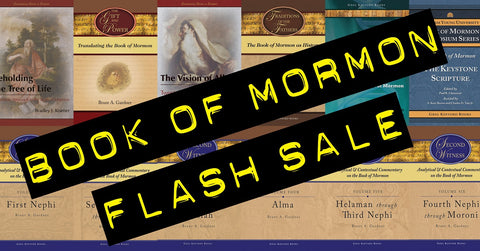
Friday, Sep 21 through Monday, Sep 24
In commemoration of Joseph Smith receiving the golden plates on September 22, 1827, we are pleased to offer a sale on the following Book of Mormon titles:*
Ebooks
|
$20.99 |
$27.99 |
$22.99 |
|
$27.99 |
$9.99 |
Print Books
|
$39.95 |
$39.95 |
$39.95 |
|
$49.95 |
$39.95 |
$39.95 |
|
$34.95 |
|
$129.95 |
*Offer valid for US domestic customers only. Print book sale limited to available supply.
Q&A Part 2 with the Editors of The Expanded Canon: Perspectives on Mormonism & Sacred Texts September 11 2018

Hardcover $35.95 (ISBN 978-1-58958-637-6)
Part 2: Q&A with Brian D. Birch (Part 1)
Q: When and how did the Mormon Studies program at UVU launch?
A: The UVU Mormon Studies Program began in 2000 with the arrival of Eugene England. Gene received a grant from the National Endowment for the Humanities to explore how Mormon Studies could succeed at a state university. A year-long seminar resulted that included a stellar lineup of consultants and guest scholars. From that point forward, the Religious Studies Program has developed multiple courses complemented by our annual Mormon Studies Conference and Eugene England Lecture—to honor Gene’s tragic and untimely passing in 2001. The program also hosts and facilitates events for independent organizations and publications including the Society for Mormon Philosophy and Theology, the Dialogue Foundation, the Interpreter Foundation, Mormon Scholars in the Humanities, Association for Mormon Letters, and others.
Q: How is the UVU Mormon Studies program distinguished from Mormon Studies programs that have emerged at other campuses?
A: Mormon Studies at UVU is distinguished by the explicitly comparative focus of our work. Given the strengths of our faculty, we have emphasized courses and programming that addresses engagement and dialogue across cultures, faith traditions, and theological perspectives. Permanent course offerings include Mormon Cultural Studies, Mormon Theology and the Christian Tradition, Mormon Anthropology, and Mormon Literature. Our strengths lie in areas other than Mormon history, which is well represented at other institutions—and appropriately so. Given the nature of our institution, our events are focused first and foremost on student learning, but all our events are free and open to the public and we welcome conversation between scholars and nonprofessionals.
Q: How long has the annual UVU Mormon Studies Conference been held, and what have been some of the topics of past conferences?
A: As mentioned above, the Mormon Studies Conference was first convened by Eugene England in 2000, and to date we have convened a total of nineteen conferences. Topics have ranged across a variety of issues including “Islam and Mormonism,” “Mormonism in the Public Mind,” “Mormonism and the Art of Boundary Maintenance,” “Mormonism and the Internet,” etc. We have been fortunate to host superb scholars and to bring them into conversation with each other and the broader public.
Q: Where did the material for the first volume, The Expanded Canon, come from?
A: The material in The Expanded Canon emerged came from our 2013 Mormon Studies Conference that shares the title of the volume. We drew from the work of conference presenters and added select essays to round out the collection. The volume is expressive of our broader approach to bring diverse scholars into conversation and to show a variety of perspectives and methodologies.
Q: What are a few key points about this volume that would be of interest to readers?
A: Few things are more central to Mormon thought than the way the tradition approaches scripture. And many of their most closely held beliefs fly in the face of general Christianity’s conception of scriptural texts. An open or expanded canon of scripture is one example. Grant Underwood explores Joseph Smith’s revelatory capacities and illustrates that Smith consistently edited his revelations and felt that his revisions were done under the same Spirit by which the initial revelation was received. Hence, the revisions may be situated in the canon with the same gravitas that the original text enjoyed. Claudia Bushman directly addresses the lack of female voices in Mormon scripture. She recommends several key documents crafted by women in the spirit of revelation. Ultimately, she suggests several candidates for inclusion. As the Mormon canon expands it should include female voices. From a non-Mormon perspective, Ann Taves does not embrace a historical explanation of the Book of Mormon or the gold plates. However, she does not deny Joseph Smith as a religious genius and compelling creator of a dynamic mythos. In her chapter she uses Mormon scripture to suggest a way that the golden plates exist, are not historical, but still maintain divine connectivity. David Holland examines the boundaries and intricacies of the Mormon canon. Historically, what are the patterns and intricacies of the expanding canon and what is the inherent logic behind the related processes? Additionally, authors treat the status of the Pearl of Great Price, the historical milieu of the publication of the Book of Mormon, and the place of The Family: A Proclamation to the World. These are just a few of the important issues addressed in this volume.
Q: What is your thought process behind curating these volumes in terms of representation from both LDS and non-LDS scholars, gender, race, academic disciplines, etc?
A: Mormon Studies programing at UVU has always been centered on strong scholarship while also extending our reach to marginalized voices. To date, we have invited guests that span a broad spectrum of Mormon thought and practice. From Orthodox Judaism to Secular Humanists; from LGBTQ to opponents to same-sex marriage; from Feminists to staunch advocates of male hierarchies, all have had a voice in the UVU Mormon Studies Program. Each course, conference, and publication treating these dynamic dialogues in Mormonism are conducted in civility and the scholarly anchors of the academy. Given our disciplinary grounding, our work has expanded the conversation and opened a wide variety of ongoing cooperation between schools of thought that intersect with Mormon thought.
Q: What can readers expect to see coming from the UVU Comparative Mormon Studies series?
A: Our 2019 conference will be centered on the experience of women in and around the Mormon traditions. We have witnessed tremendous scholarship of late in this area and are anxious to assemble key authors and advocates. Other areas we plan to explore include comparative studies in Mormonism and Asian religions, theological approaches to religious diversity, and questions of Mormon identity.
Download a free sample of The Expanded Canon
Listen to an interview with the editors
Upcoming events for The Expanded Canon:
Tue Sep 18 at 7pm | Writ & Vision (Provo) | RSVP on Facebook
Wed Sep 19 at 5:30 pm | Benchmark Books (SLC) | RSVP on Facebook
Q&A Part 1 with the Editors of The Expanded Canon: Perspectives on Mormonism & Sacred Texts August 29 2018

Hardcover $35.95 (ISBN 978-1-58958-637-6)
Part 1: Q&A with Blair G. Van Dyke (Part 2)
Q: How is the Mormon Studies program at Utah Valley University distinguished from Mormon Studies programs that have emerged at other universities?
A: The Mormon Studies program at UVU is distinguished by the comparative components of the work we do. At UVU we cast a broad net across the academy knowing that there are relevant points of exploration at the intersections of Mormonism and the arts, Mormonism and the sciences, Mormonism and literature, Mormonism and economics, Mormonism and feminism, Mormonism and world religions, and so forth. Additionally, the program is distinguished from other Mormon Studies by the academic events that we host. UVU initiated and maintains the most vibrant tradition of creating and hosting relevant and engaging conferences, symposia, and intra-campus events than any other program in the country. Further, a university-wide initiative is in place to engage the community in the work of the academy. Hence, the events held on campus are focused first and foremost for students but inviting the community to enjoy our work is very important. This facilitates understanding and builds bridges between scholars of Mormon Studies and Mormons and non-Mormons outside academic orbits.
Q: Where did the material for The Expanded Canon come from?
A: The material that constitutes volume one of the UVU Comparative Mormon Studies Series came from an annual Mormon Studies Conference that shares the title of the volume. We drew from the work of some of the scholars that presented at that conference to give their work and ours a broader audience. Generally, the contributors to the volume are not household names or prominent authors that regularly publish in the common commercial publishing houses directed at Mormon readership. As such, this volume introduces that audience to prominent personalities in the field of Mormon Studies. It is not uncommon for scholars in this field of study to look for venues where their work can reach a broader readership. This jointly published volume accomplishes that desire in a thoughtful way.
Q: What are a few key points about this volume that would be of interest to readers?
A: Few things are more central to Mormon thought than the way the tradition approaches scripture. And many of their most closely held beliefs fly in the face of general Christianity’s conception of scriptural texts. An open or expanded canon of scripture is one example. Grant Underwood explores Joseph Smith’s revelatory capacities and illustrates that Smith consistently edited his revelations and felt that his revisions were done under the same Spirit by which the initial revelation was received. Hence, the revisions may be situated in the canon with the same gravitas that the original text enjoyed. Claudia Bushman directly addresses the lack of female voices in Mormon scripture. She recommends several key documents crafted by women in the spirit of revelation. Ultimately, she suggests several candidates for inclusion. As the Mormon canon expands it should include female voices. From a non-Mormon perspective, Ann Taves does not embrace a historical explanation of the Book of Mormon or the gold plates. However, she does not deny Joseph Smith as a religious genius and compelling creator of a dynamic mythos. In her chapter she uses Mormon scripture to suggest a way that the golden plates exist, are not historical, but still maintain divine connectivity. David Holland examines the boundaries and intricacies of the Mormon canon. Historically, what are the patterns and intricacies of the expanding canon and what is the inherent logic behind the related processes? Additionally, authors treat the status of the Pearl of Great Price, the historical milieu of the publication of the Book of Mormon, and the place of The Family A Proclamation to the World. These are just a few of the important issues addressed in this volume.
Q: What is your thought process behind curating these volumes in terms of representation from both LDS and non-LDS scholars, gender, race, academic disciplines, etc?
A: Mormon Studies programing at UVU has always been centered on solid scholarship while simultaneously broadening tents of inclusivity. To date, we have invited guests that span spectrums of thought related to Mormonism. From Orthodox Judaism to Secular Humanists; from LGBTQ to opponents to same-sex marriage; from Feminists to staunch advocates of male hierarchies, all have had a voice in the UVU Mormon Studies Program. Each course, conference, and publication treating these dynamic dialogues in Mormonism are conducted in civility and the scholarly anchors of the academy. Given our disciplinary grounding, our work has expanded the conversation and opened a wide variety of ongoing cooperation between schools of thought that intersect with Mormon thought.
Download a free sample of The Expanded Canon
Listen to an interview with the editors
Tue Sep 18 at 7pm | Writ & Vision (Provo) | RSVP on Facebook
Wed Sep 19 at 5:30 pm | Benchmark Books (SLC) | RSVP on Facebook
Contesting Truth through Mutual Openness July 18 2018

Charles Randall Paul will be speaking on the topic of religious diplomacy and signing copies of his book at Weller Book Works (Salt Lake City) on Tuesday, Aug. 7th at 6:30 PM and at Writ & Vision (Provo) on Thursday, Aug. 9th at 7PM. Both events are free to attend.
Humans are social influencers by their very existence. They are always intentionally persuading each other in some fashion. All human life includes continual negotiation of social activities from “pass the salt” to “should we get married?” When one of us believes a purpose is good and an action right, that influences a response from others—and the response influences further responses.
While the ideal might be complete social unity or unconstrained freedom for all, human groups and societies should expect continual religious and ideological contestation. Within our interconnected societies, conflicting world-views and purposes are inevitable. No social program for peace will succeed that requires adamant believers to compromise or dilute their core values. Instead, we sustain peaceful tension within our societies through co-resistance and collaboration with our ideological rivals. Crucial to this is the absence of ill-will in our collaborative contestation.
Let me now make a distinction between these terms: Enemy, antagonist, agonist, ally, and friend. An enemy desires and acts to eliminate, enslave, or diminish others by passive or aggressive means. An antagonist acts like an enemy but does not desire to be one. If she presumes you are an enemy, she might be reacting defensively with no intent to harm you otherwise. An agonist is a fellow contestant who desires to win an ideological contest through persuasion. An ally is on your side because of shared interests. A friend desires your love and well-being and will self-sacrifice to promote it. It is possible to be an ally that is also really an enemy, but it is impossible to be a real friend and an enemy. However, your agonistic rival can also be your friend—but enduring (much less enjoying) this relationship is an acquired taste and skill.
If you have a real enemy, you need to defend yourself accordingly. But we need to determine first if antagonists are true enemies or agonists. An agonist desires to contest differences in order to bring about positive change for both sides, rather than the destruction of their rival. Sportsmanship is a common attitude of agonists. Persuading agonists to your side may make them allies; but converting agonists to trust and love can make them friends even while they remain persuasive agonists. The path forward lies in vulnerable openness between rivals with an open and honest disclosure of motives and beliefs. This requires courage to exchange critical and offensive ideas and ideals without taking offense. Let there be no mistake: openness that is truly open to change is always a dangerous experiment, especially for those who are concerned about diluting true orthodoxy (on the left or right) with relativism.
To prepare for inevitable contestations over religious, political, or ideological differences, I present ten useful attitudes and methods to remember when the pressure to either disengage or eliminate our fellow agonists becomes intense. I call this The Way of Mutual Openness:
Be Honest
Honesty begins when you look in the mirror. Who do you really think you are and who do want to become? When you are deeply honest, you acknowledge your motives for doing things and express your thoughts and feelings without faking it. Your honesty prompts others to respond the same way, and with open hearts and minds real communication results.
Be Kind
Kindness goes further toward building trust than the other practices listed here. It is not weak, naive, or mere politeness. Kindness is a language easily recognized and understood by everyone. Sincere kindness is a powerful way to influence others to desire to hear you. But, be wise: nothing shatters trust more than phony, manipulative kindness, or false respectfulness.
Listen Well
It is hard to listen well when you focus more on your feelings and thoughts than those of the person addressing you. Listening well is not remaining quiet before you insert your response; it is intense focus on a unique person with a desire for understanding. By listening like this to others you offer the gift of respectful empathy that everyone craves to receive. In return others feel like they should listen well to understand you.
Share the Floor
If you want to be taken seriously you must take others seriously. Sharing the floor means allowing others equal time to speak even when you “know” you are right and they are wrong. It acknowledges the mutual dignity of those engaged in conversation. Hogging the floor is disrespectful and rude, and it always undermines your persuasive ability when you appear dismissive or fearful of what others have to say.
Presume Good Will
We often presume that others do not have our best interests at heart. Sometimes they don’t. But you sabotage any honest communication with someone you presume to be stupid, duped, or ill-intentioned. Presuming good will is not agreeing with others’ beliefs or values. It means that you grant that others are clear thinking and good hearted unless they prove otherwise.
Acknowledge the Differences
Each human is uniquely different with a unique history and perspective. Acknowledging our important differences openly frees us to know where we stand without having to guess. It creates a tone of trust for real conversation. You cannot feel whole or honest if you focus only on similarities and avoid facing differences in deep beliefs and values.
Answer the Tough Questions
With genuine differences come tough questions—especially if the goal is a trusting relationship. When you answer tough questions in a straightforward way, sharing the floor equally and presuming good will, you build strong mutual trust. You can then face offensive issues without taking offense. However, diving deeper for better understanding has a limit. Aggressive interrogation or pushing for private details destroys trust.
Give Credit Where Credit is Due
Any compliment feels good, but a sincere compliment from an unexpected source such as a rival or critic can move our hearts powerfully toward trust. By openly admiring the excellence or good on “the other side” you demonstrate your honesty and fairness, and your confidence that your side can handle the truth. But be cautious—insincere compliments to manipulate or disarm others disastrously undermine any grounds for trust.
Speak Only for Yourself
Each of us is unique and we don’t like others—especially outsiders—to stereotype us or claim they know what we really believe or value. So, ask rather than tell others what they think and feel. It is tempting to speak for your friends and tribe members as if they all share the same view as you do. Except when you have been authorized to speak on behalf of others, speak only for yourself and encourage others to do likewise.
Keep Private Things Private
Humans are social beings, but their thoughts and feelings are private unless expressed. Personal dignity is based in large part on your freedom to choose when and where to share your inner self with others. Being open, honest, and trustworthy does not require you to disclose all things to all people. Keeping private things private means that you strictly honor someone’s choice to say something to you alone. If you cannot keep it private, you should ask the person not to share it.
These are the times that try our souls. In our increasingly polarized society, we will doubtless continue arguing over political, ideological, and religious differences. Based on years of experience in religious diplomacy, I believe the ten attitudes above will sustain with confidence anyone using them to actively engage in challenging and rewarding conversations that build healthy trust.
 Charles Randall Paul is board chair, founder, and president of the Foundation for Religious Diplomacy. He has lectured widely and written numerous articles on healthy methods for engaging differences in religions and ideologies. He is the author of Converting the Saints: A Study of Religious Rivalry in America.
Charles Randall Paul is board chair, founder, and president of the Foundation for Religious Diplomacy. He has lectured widely and written numerous articles on healthy methods for engaging differences in religions and ideologies. He is the author of Converting the Saints: A Study of Religious Rivalry in America.






